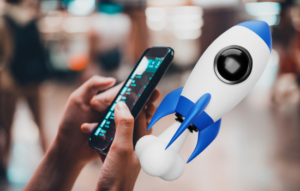Advertisements
Learn to play guitar
Have you always wanted to play the guitar and don't know where to start? You've come to the right place! Learning to play this instrument can seem challenging at first, but with the right tools and a clear focus, you'll soon be playing your favorite songs.
Advertisements
This article will guide you step by step, from choosing your first guitar to playing your first melodies.
Why learning to play guitar is a great idea
The guitar is one of the most versatile and accessible instruments in the world.
See also
- Discover your dog's breed with these amazing apps
- Transform your voice with these amazing apps
- Learn to play the accordion at home
- Discover Your Family History With These Apps
- Applications for weighing livestock
Whether you prefer classical music, rock, pop or flamenco, this instrument has something to offer for everyone. Plus, learning to play the guitar stimulates creativity, improves memory and can be a great way to relax.
Advertisements
Step 1: Choose the right guitar – Learn to play guitar
Before you start, it's essential to have the right instrument. There are several types of guitars, and choosing the right one will depend on your preferences and musical style.
- Acoustic guitar: Perfect for beginners due to its versatility. It does not require an amplifier and is ideal for playing songs at home or outdoors.
- Electric guitar: Ideal for those who dream of playing rock or blues. You will need an amplifier to use it.
- Classical guitar: It has nylon strings, making it softer on the fingers, perfect for beginners and classical music.
Practical advice: If you're not sure which one to choose, visit a music store and try out different models. You can also rent a guitar before making a larger investment.
Step 2: Learn the basics
Before playing full songs, it's important to understand the basics:
- Parts of the guitar: Learn the names and functions of the main parts, such as the neck, strings, frets, and headstock.
- Tuning: Use a digital tuner to make sure your guitar sounds right. There are apps like GuitarTuna that make this process easy.
- Instrument grip: Sit in a comfortable position and hold the guitar so that you can reach all the strings without tension.
Step 3: Master the basic chords
Chords are the basis for playing many songs. Start with the simplest ones, such as:
- C major (C): This chord is ideal for beginners.
- G major (G): Widely used in popular songs.
- D major (D): An essential chord in many genres.
Practical advice: Spend at least 10 minutes a day practicing the changes between these chords. It may seem complicated at first, but repetition is key.
Step 4: Practice exercises to improve your technique
Constant practice is essential to improve. Here are some exercises that will help you progress quickly:
- Scale exercise: Play the notes on each string in ascending and descending order to strengthen your fingers.
- Strumming: Practice different strumming patterns to develop rhythm and flow.
- Chord changes: Try changing from one chord to another without stopping.
Step 5: Use digital resources to learn
In the digital age, learning to play guitar has never been easier. Here are some tools and apps that can help you:
- Yousician: An interactive app that guides you in real time while you play.
- Fender Play: Offers structured lessons for beginners.
- Tabs and tutorials on YouTube: Platforms like YouTube are full of free tutorials to play your favorite songs.
Step 6: Play easy songs for beginners
Start with simple songs that use basic chords. Some popular choices are:
- “Wonderwall” by Oasis
- “Knockin' on Heaven's Door” by Bob Dylan
- “La Bamba” by Ritchie Valens
Step 7: Be patient and consistent
Learning to play guitar takes time and dedication. Don't be discouraged if you can't master a song at first. Remember that even the best guitarists started out as beginners.

Learn to play guitar
FAQ: Frequently asked questions about Learn to play guitar
1. How long will it take me to learn to play guitar?
It depends on the practice. With 15-30 minutes a day, you can play your first songs in a few weeks.
2. Is it necessary to take classes with a teacher?
It is not mandatory, but it can be useful. Online classes and apps are also great alternatives.
3. What type of guitar is best for beginners?
The acoustic or classical guitar is usually the best option due to its ease of use and affordable cost.
4. Can I learn to play guitar on my own?
Yes, with resources like YouTube tutorials and interactive apps, it is completely possible.
5. How much does a beginner guitar cost?
Prices vary, but you can find good quality guitars starting at $100.
Learning to play guitar is an enriching experience that combines creativity, discipline and fun. No matter your level of experience, the most important thing is to enjoy the process and celebrate every small achievement. Go ahead and start today and discover the world of possibilities that this instrument has to offer!
Learn to play guitar
Download here






